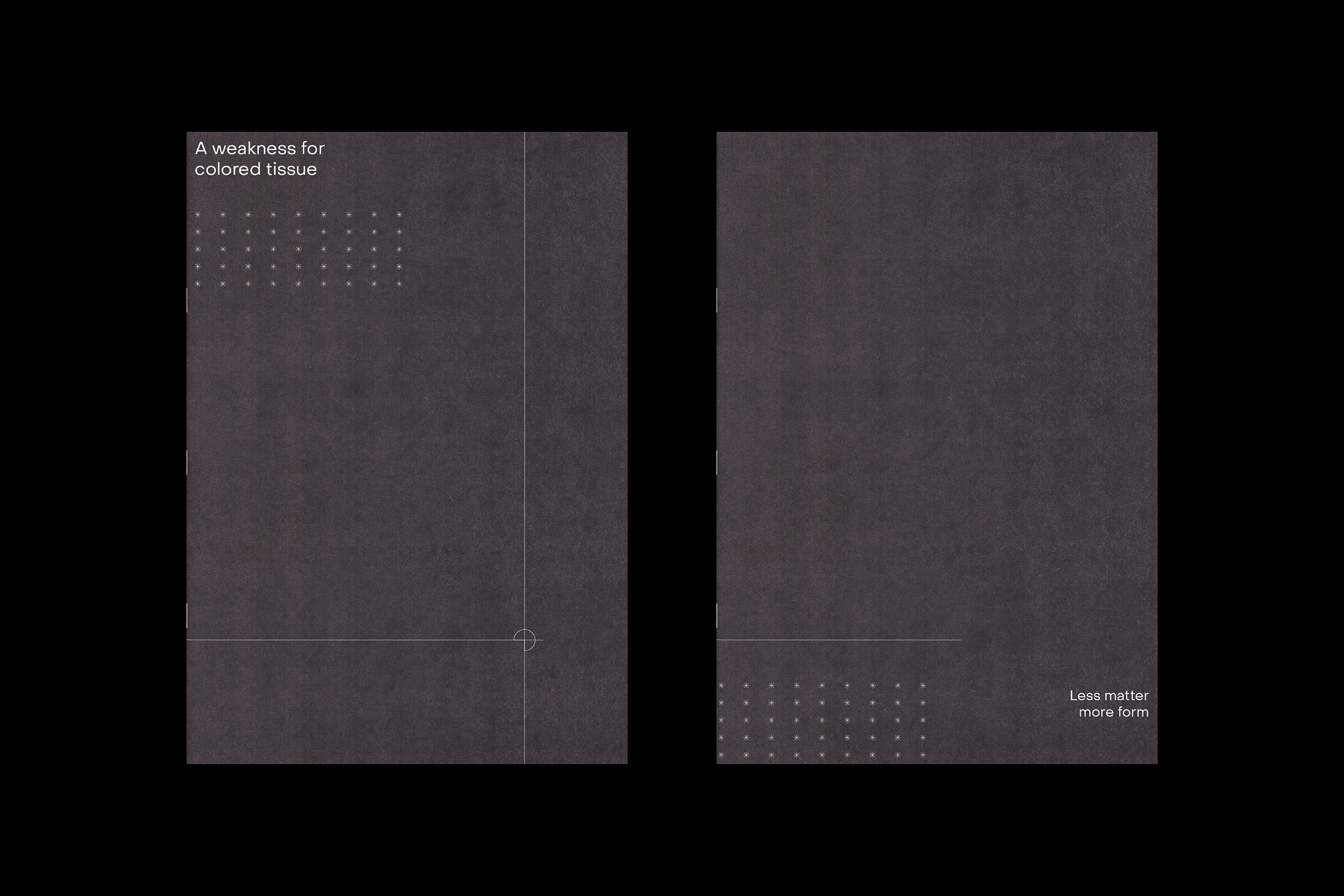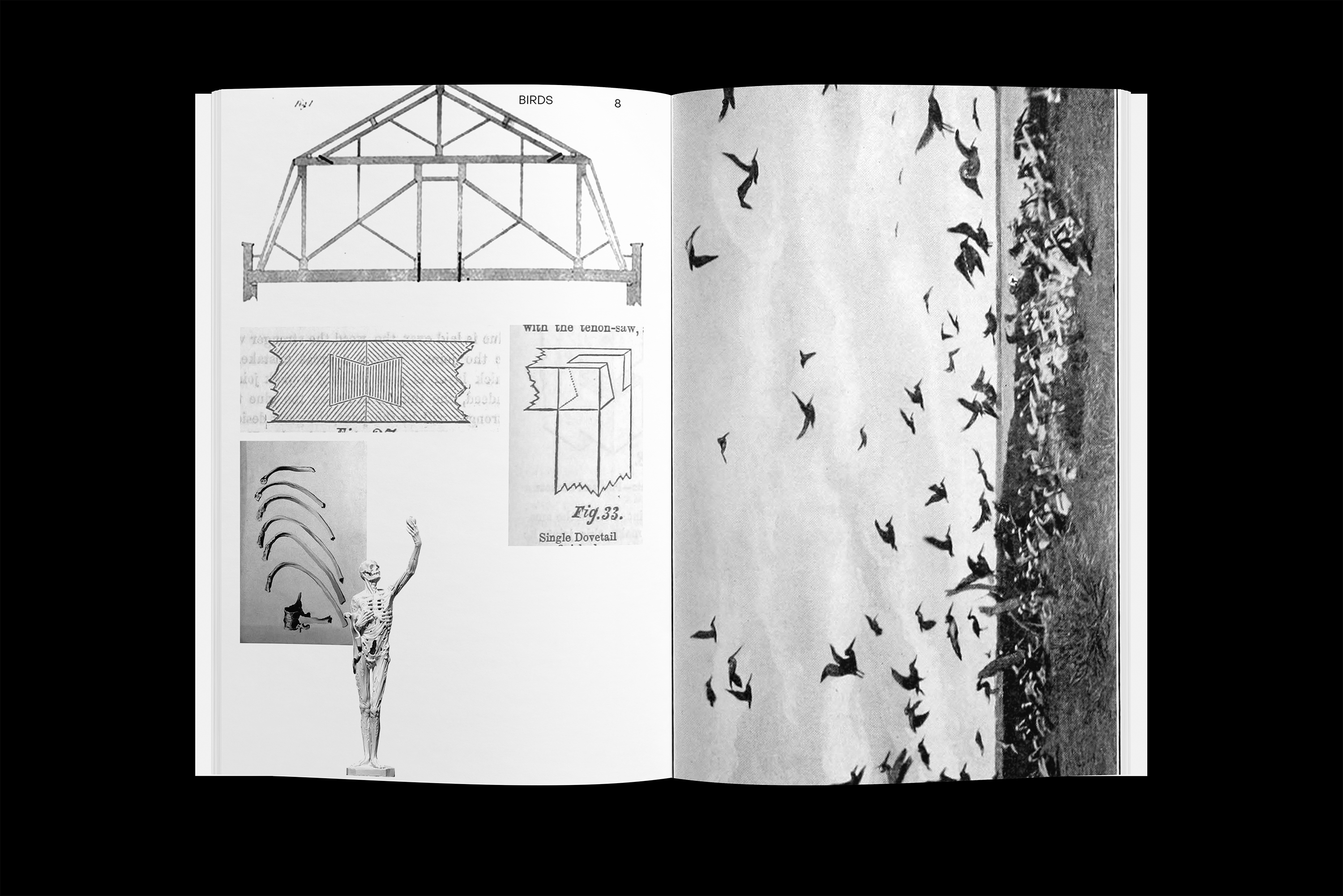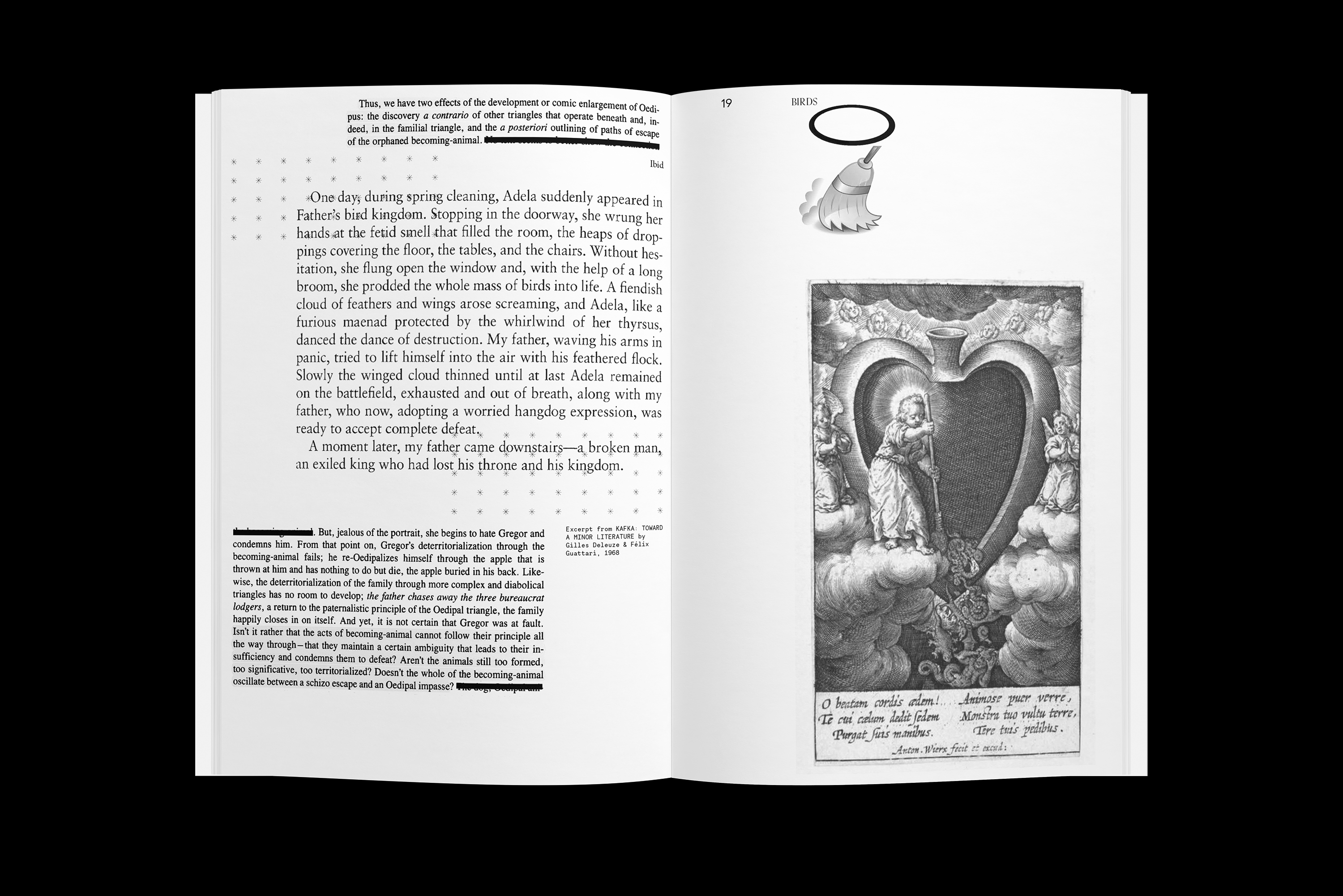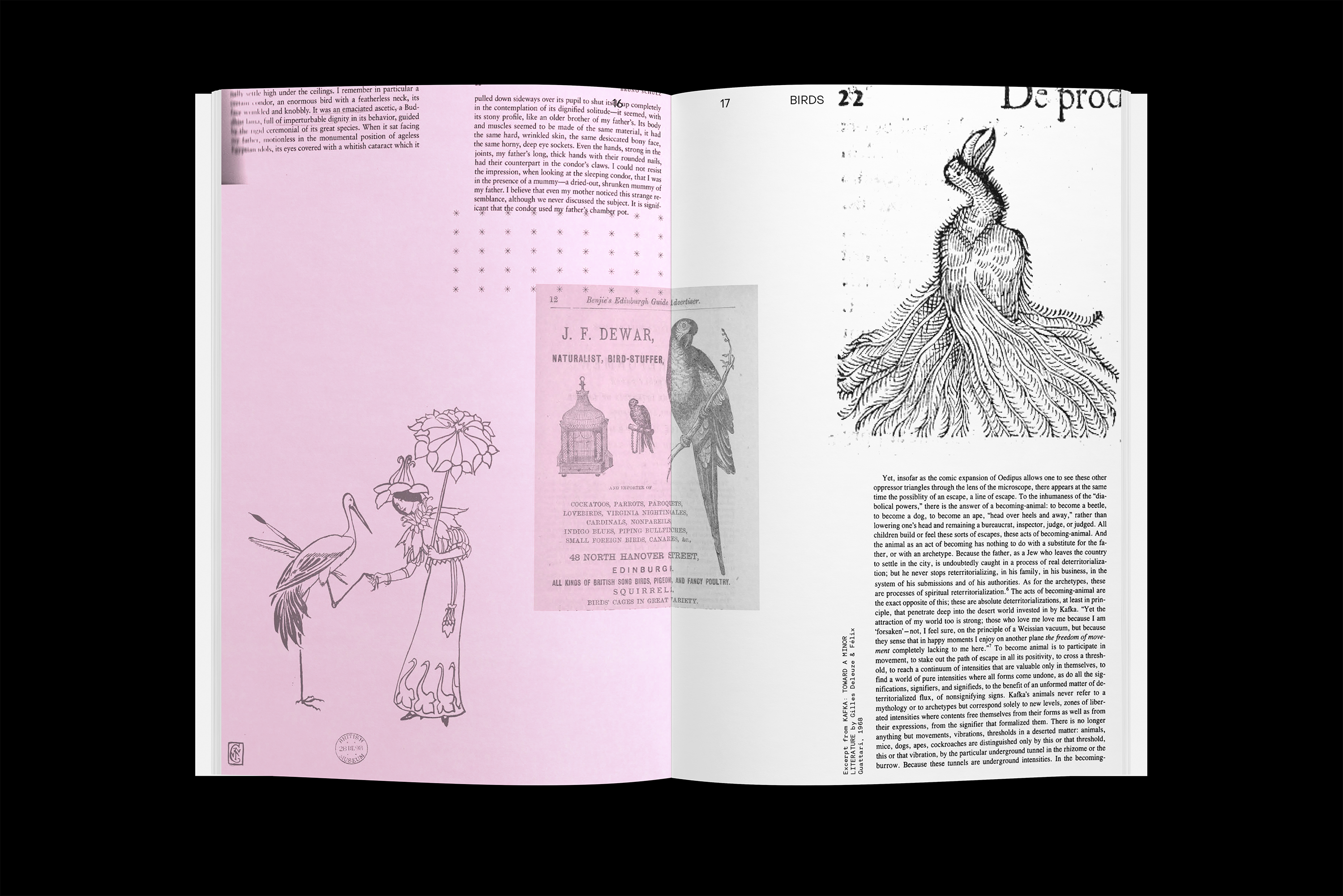A weakness for colored tissue
PublicationA4, 76 pages

A weakness for colored tissue a book report about “The Street of Crocodiles” by Bruno Schulz, a Polish Jewish writer, artist and teacher who lived and dreamed in Drohobycz (present day Ukraine). Schulz, often likened to Kafka because of his fantastical interpretations of day-to-day life, published “The Street of Crocodiles” (the original Polish translating to “Cinnamon Shops) in 1934.
The Street of Crocodiles is not a literary work that has few critiques, so this project’s goal is to orbit around two key thoughts. First, the role of language in making sense of the world, however difficult such a task may be. Second, and in line with the first point of investigation, I explore the matter (in all the meanings of the word) at the heart of much of The Street of Crocodiles, namely the life hiding behind the disguise of lifelessness—how Schulz’s writing extends the right of agency to non-human actants, from non-human animals to human hybrids to that banal refuse—tandeta—we like to call garbage.
“A weakness for colored tissue” thus concerns the micropolitics of language, trash and trash-language and the political resistance possible through certain types of non-ordinary writing.












